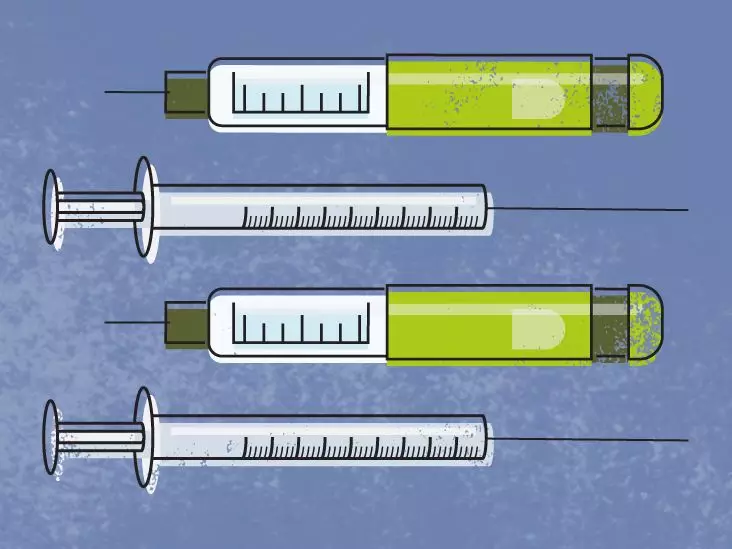Opdivo Qvantig, a formidable player in the realm of oncology, operates on the frontlines of cancer treatment. Formulated primarily with nivolumab, an engineered monoclonal antibody, it works by activating the body’s immune system to detect and attack cancer cells. This immunotherapy has revolutionized treatment options for various cancers, including kidney, melanoma, lung, head and neck, and even certain gastrointestinal cancers. Given its complexity and efficacy, the dosage regimens can be quite intricate, reflecting the serious nature of the diseases it tackles.
Personalized Dosing: The Art and Science of Opdivo Qvantig
The cornerstone of an effective treatment plan with Opdivo Qvantig lies in personalized dosage. Unlike conventional medications, the dosage of this immunotherapy varies significantly based on the specific cancer type and whether it is being used alone or in concert with chemotherapy. Typical schedules can involve receiving an injection every two, three, or four weeks, with doses meticulously calibrated to suit individual patient conditions. Doctors will factor in various elements, including the cancer’s progression and the patient’s overall health, to optimize treatment.
For instance, in kidney cancer, patients typically receive either 600 mg every two weeks or 1,200 mg every four weeks. Such differentiation emphasizes the nuanced nature of cancer therapy, where a one-size-fits-all approach is rarely effective. This customizability can lead to enhanced outcomes, demonstrating that thoughtful medical intervention goes beyond mere medication—it involves listening, adjusting, and evolving patient care.
The Specifics of Cancer Management with Opdivo Qvantig
Opdivo Qvantig’s application in different cancer types exemplifies the medication’s versatility. For melanoma patients, the regimented doses—600 mg every two weeks or 1,200 mg every four weeks—provide a solid foundation to combat this aggressive skin cancer. The clinical efficacy observed underscores how proactive treatment can prolong survival rates, making this therapy a beacon of hope.
Further illustrating its importance, in cases of non-small cell lung cancer (NSCLC), treatment might evolve into a surgical context, necessitating variable dosing protocols that incorporate chemotherapy along with Opdivo. Patients may initially start with 900 mg every three weeks, transitioning to maintain more potent doses following surgical intervention. Each nuance in the dosage schedule is reflective of the disease’s complexity and the need for agility in treatment strategies.
Administration: The Pathway to Recovery
Opdivo Qvantig is delivered through a subcutaneous injection, a method that ensures the medication’s bioavailability and optimizes effectiveness. Administered by healthcare professionals, these injections are typically conducted in medical facilities, ensuring that patients are closely monitored during the process. Depending on patient needs, options for home healthcare administration can also be considered, promoting comfort and convenience.
Each injection takes a mere 3 to 5 minutes, illustrating how effective cancer treatment can be delivered efficiently. The practical aspect of the therapy cannot be overlooked; regular injections may seem daunting, but the manageable duration enhances patient compliance, essential for long-term success in cancer treatment.
Long-Term Commitment: Endurance in Treatment
Receiving Opdivo Qvantig is not a sprint; it’s a marathon. Depending on individual responses to the drug, treatment can extend over one to two years or sometimes even longer. For many patients, this long-term commitment can be challenging. However, evidence of the drug’s efficacy typically warrants this extended usage. Monitoring through tests and scans will inform both the patient and physician regarding the tumor response to therapy, guiding decisions on whether to continue or adjust treatment.
It’s imperative to note that while Opdivo Qvantig begins its action from the first dose, responses can vary. Some may witness tumor shrinkage while others may not experience immediate gratification. This reflects the necessity of patient support alongside regular medical evaluations to foster resilience through uncertainty.
The journey with Opdivo Qvantig is emblematic of the broader evolution in cancer treatment—moving beyond standardized therapies to individualized care plans. Each patient’s battle is distinct, and with innovations like Opdivo Qvantig, the possibilities for effective cancer management continue to grow. Through informed dosing schedules and adaptive treatment modalities, hope reignites for countless individuals facing a cancer diagnosis, showcasing the promising frontier of immunotherapy in modern medicine.

